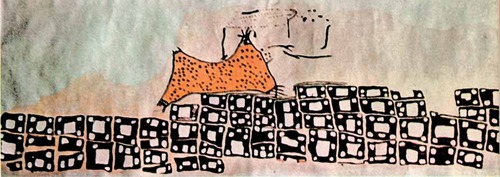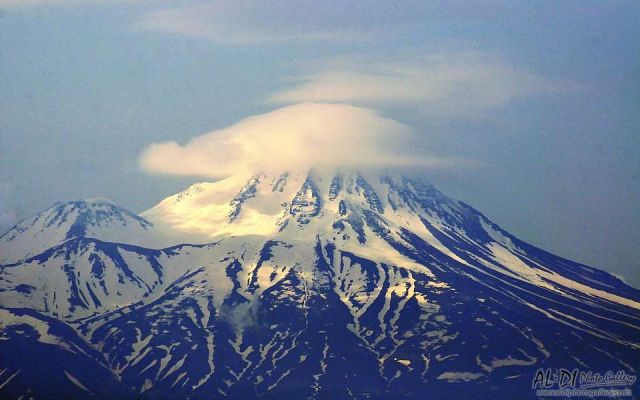

| Visitors Now: | |
| Total Visits: | |
| Total Stories: |
The Ancients Left A Warning About A Volcano Erupting 9,000 Years Ago!
Monday, October 28, 2013 8:04
% of readers think this story is Fact. Add your two cents.
(N.Morgan) Were the ancients trying to warn of us of an impending, environmental doom? The rocks speak and this time, they tell a tale of a horrendous eruption. A nearly 9,000-year-old mural of a village with a backdrop of an erupting volcano has now been geochemically pinned to a specific eruption of the Hasan Dağ twin-peaks volcano located about 130 km (70 miles) northeast of the ancient Çatalhöyük town site in Turkey.
The mural, painted in ocher on an adobe wall that was long buried, has long been considered the world’s earliest depiction of an eruption, as well as the earliest known landscape painting, the first historical news event and the first urban plan. Until now, however the volcano it was depicting had not been confirmed with any dated samples of minerals from the volcano linking the image to a specific eruption.

The mural painted in ocher (overlain here on a photo of Hasan Dağ volcano) is considered the world’s earliest depiction of an eruption, as well as the earliest known landscape painting.
Images courtesy of Axel Schmitt, et al.
“The original discoverer of the mural interpreted it as a depiction of eruption of Hasan Dağ,” said volcanologist Axel Schmitt of the University of California in Los Angeles. “We’re volcanologists. We’re trying to find out the eruption recurrence.”
Unfortunately, the archeological interpretation of the eruption made its way into the volcanological literature as evidence that Hasan Dağ is an active volcano. Then, archeologists started referring to the volcanological literature as evidence that the volcano was active — accidentally falling into circular reasoning.
To break out of that circle, Schmitt and some colleagues, including some Turkish volcanologists, gathered volcanic pumice rock from Hasan Dağ and applied to them a new mineral dating technique using uranium-thorium-helium in zircon crystals.

“We’ve been pushing this dating technique to younger and younger ages,” said Schmitt. “As we do that it overlaps with archaeological timescales.”
he zircons revealed two explosive eruptions. One was about 29,000 years ago and the other at about 9,000 years ago. The latter was compared with the carbon-14 dating of artifacts at Çatalhöyük, including the strata that contains the mural.
“It agrees,” Schmitt said. “It overlaps give or take 1,000 years.” He will be presenting the results on October 30 at the meeting of the Geological Society of America in Denver.
“It has gotten a lot of play,” said Stanford University archeologist Ian Hodder, who is considered an expert on the Çatalhöyük site. “There are books written about that painting.”
The mural is especially well known in Turkey, where it is generally accepted as a warning from the past of Hasan Dağ’s potential danger, Hodder said. And now there’s even more reason to believe it.

More Stories Contributed By N. Morgan





That confirms it…….I’m building my house out of adobe.
I would not call it a warning about possible future eruptions, more like a record of an event that already happened. Indeed if it happens once it is possible again and helping to identify that there is a volcano in the region.
Humans really just can not get themselves all interested and/or worried unless they can find a way to apply it to their lives it seems. Not all of course, just a great deal of the population it seems.
I feel like eating ice cream now.I was more interested in the domino symbols .just don’t recall were I seen them.
Ok, I’m confused here. If I missed something, then my bad……but how can a ancient mural be geochemically pinned to a certain volcano, unless it was unearthed next to an historically active volcano in the first place?
To say the “overlay” looks like the background volcano in question, looks like a “stretch”, but what makes it seem to “predict” a future eruption?
Just asking.
Here is your answer (SCAREMONGERING), does that sound familiar?
ecclesiatical, How on Earth is an article about ancient wall paintings fear mongering??
Really! Get a grip and take a chill.

